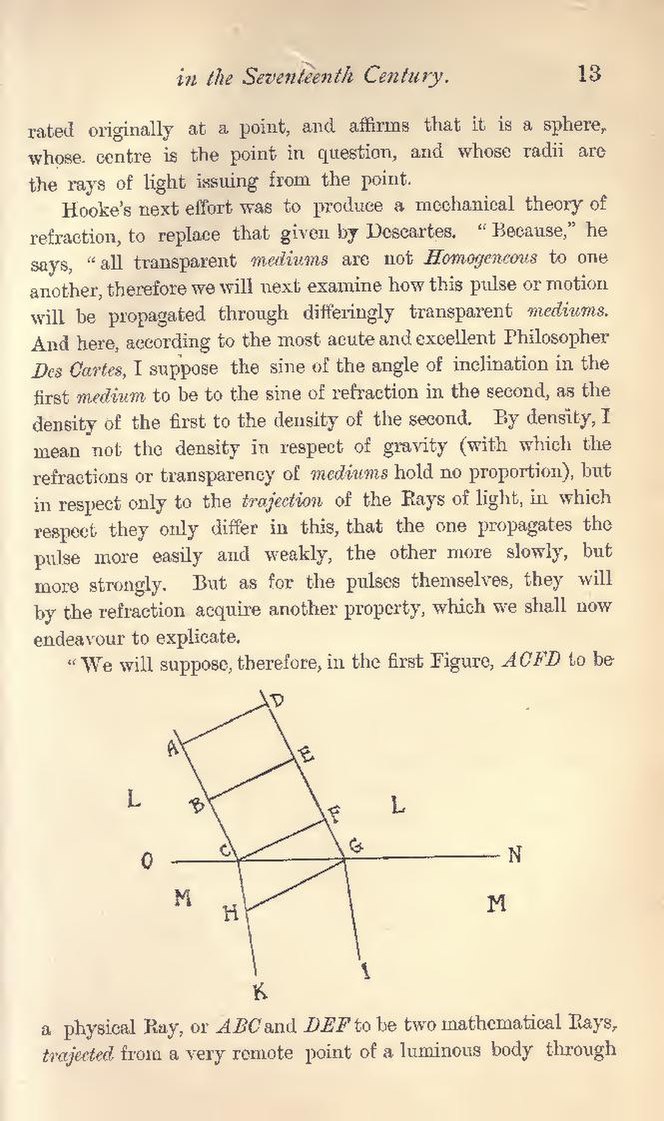rated originally at a point, and affirms that it is a sphere, whose centre is the point in question, and whose radii are the rays of light issuing from the point.
Hooke's next effort was to produce a mechanical theory of refraction, to replace that given by Descartes. "Because," he says, "all transparent mediums are not Homogeneous to one another, therefore we will next examine how this pulse or motion will be propagated through differingly transparent mediums. And here, according to the most acute and excellent Philosopher Des Cartes, I suppose the sine of the angle of inclination in the first medium to be to the sine of refraction in the second, as the density of the first to the density of the second. By density, I mean not the density in respect of gravity (with which the refractions or transparency of mediums hold no proportion), but in respect only to the trajection of the Rays of light, in which respect they only differ in this, that the one propagates the pulse more easily and weakly, the other more slowly, but more strongly. But as for the pulses themselves, they will by the refraction acquire another property, which we shall now endeavour to explicate.
"We will suppose, therefore, in the first Figure, ACFD to be
a physical Ray, or ABC and DEF to be two mathematical Rays, trajected from a very remote point of a luminous body through

